Growing Frangipani in Pots: Tips and Care Guide
Frangipani, also known as plumeria, is a beautiful shrub that produces fragrant and colorful flowers. If you’re looking for an easy way to grow frangipani without worrying about the space it takes up or its growth pattern, growing it in pots is your best bet.
White frangipani (Plumeria alba) is a popular choice for container planting due to its stunning white flowers and compact size. With proper care and attention, frangipanis can thrive in containers and add a touch of tropical beauty to your home or garden.
Are you wondering how to grow frangipani in a pot? Can native frangipani be grown in pots? Or maybe you’re curious about planting frangipani in the ground or how to grow it in a garden? We will cover all these questions and more so that you can successfully keep frangipani in a pot or any other suitable place.
Choosing the Right Pot Size for Your Frangipani
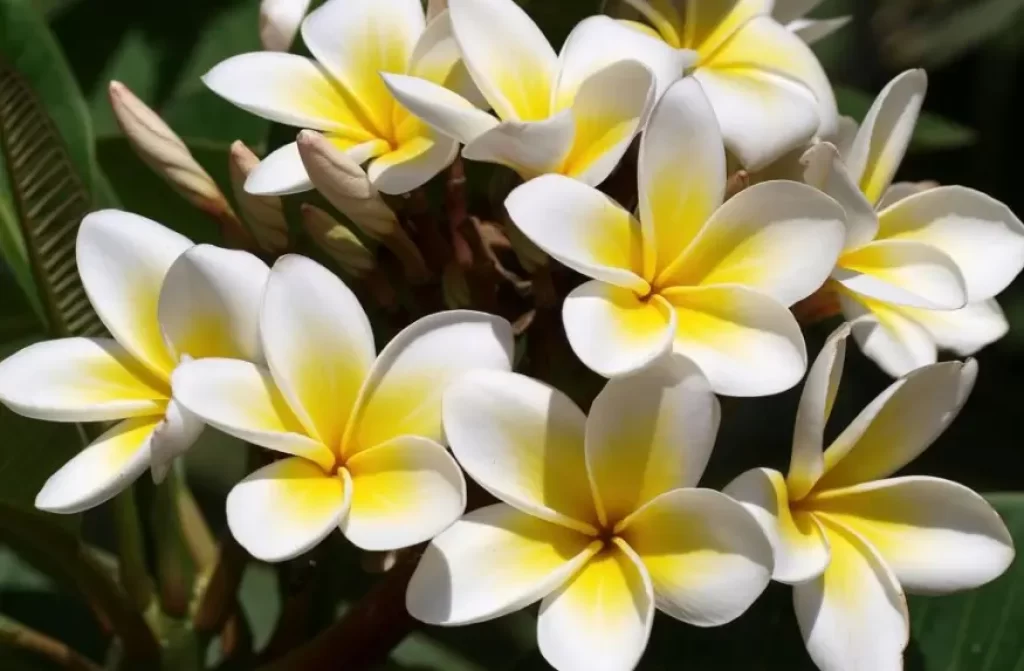
Choosing the right pot size for your frangipani is crucial to ensure its growth and survival. Here are some tips to help you choose the perfect pot size for your frangipani.
Choose a Pot Size that is One Size Larger than the Current Pot
When choosing a new pot for your frangipani, it’s essential to select one that is one size larger than its current pot. This will allow enough space for your plant’s roots to grow and expand. If you choose a pot that is too small, it can stunt the growth of your plant and lead to root-bound issues.
Consider the Weight of the Pot When Choosing the Right Size
The weight of your pot matters when selecting a new one for your frangipani. A heavier pot will be more stable and less likely to tip over in high winds or storms, while a lighter pot may be easier to move around but more prone to tipping over. It’s important to find a balance between stability and portability when selecting a new pot.
Opt for a Quality Pot That Can Withstand the Elements
Frangipanis thrive in warm climates with plenty of sunshine, which means they need pots that can withstand high temperatures and direct sunlight without cracking or fading. Opting for quality pots made from materials like terracotta or ceramic can help ensure longevity and durability against harsh weather conditions.
there are several options available online or at local nurseries. It’s best to do some research beforehand on reputable brands known for producing quality pots suitable for outdoor use.
Well-drained soil: The best soil for Frangipani in pots
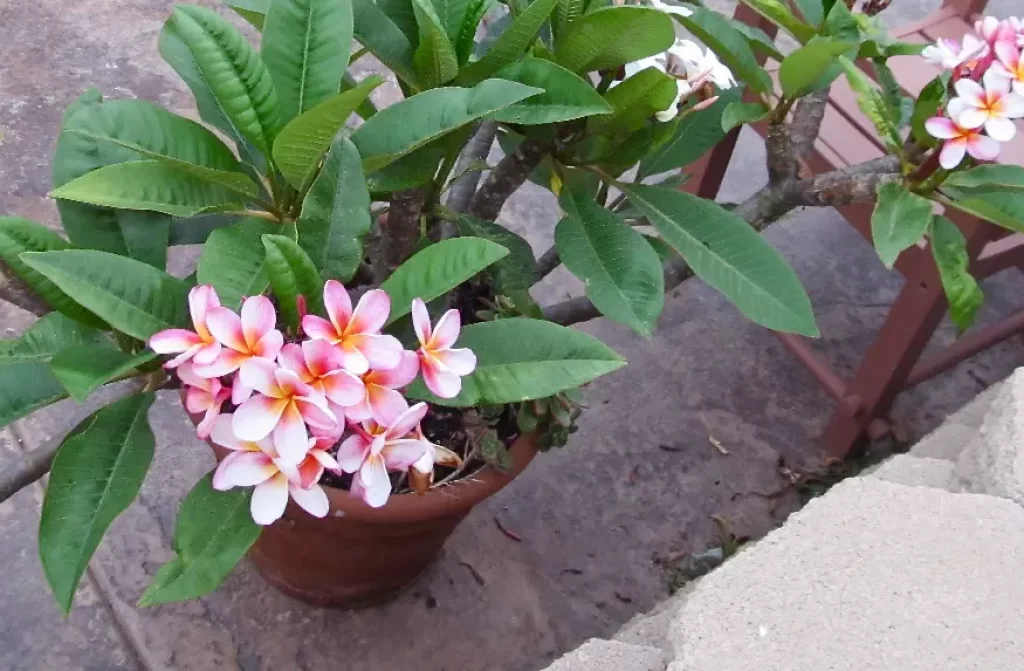
Frangipani is a beautiful tropical plant that can be grown in pots. However, to ensure it thrives and produces beautiful blooms, it’s important to provide it with the right growing medium. Quality potting mix is essential for growing Frangipani in pots, but the most crucial factor to consider is the soil’s drainage.
Why well-drained soil is crucial for Frangipani in pots
using well-draining soil is non-negotiable. This is because waterlogged soil can lead to root rot and other diseases that can kill your plant. Unlike plants grown directly on the ground, potted plants don’t have natural drainage systems. As such, excess water tends to accumulate at the bottom of the pot and deprive roots of oxygen.
How to create well-draining soil for your Frangipani
Creating well-draining soil begins with selecting a high-quality potting mix that contains organic matter such as peat moss or coconut coir. These materials help retain moisture while allowing excess water to drain away from the roots. It’s also important to choose a pot with drainage holes at its base.
To create an ideal growing medium for your Frangipani, you can add coarse sand or perlite to your potting mix. These materials improve drainage by creating air pockets within the soil structure and preventing compaction.
Tips for maintaining well-draining soil
Once you’ve created a suitable growing medium for your Frangipani, it’s important to maintain its proper moisture level. During dry spells or hot summer days, make sure not to let the soil dry out completely as this could stress your plant and cause leaf drop.
On the other hand, overwatering can also be detrimental as it leads to waterlogging and root rot. To avoid this, water your Frangipani only when the top inch of soil feels dry to touch. You can also use a moisture meter to monitor the soil’s moisture level.
Proper Watering Methods for Frangipani Trees in Pots
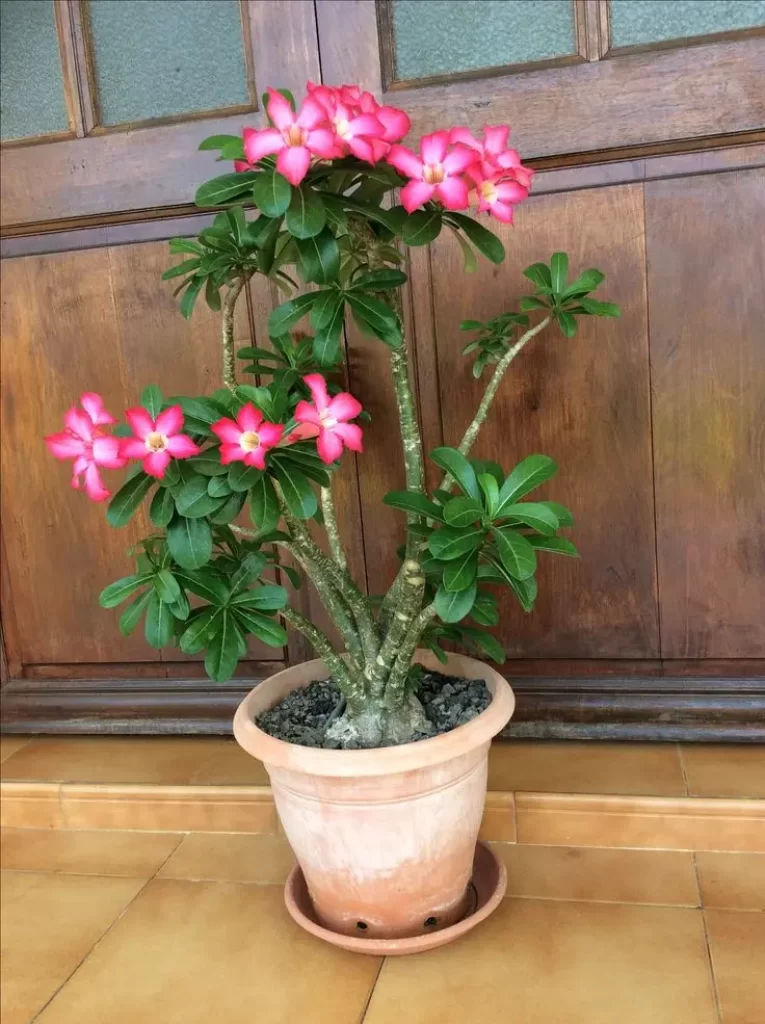
Frangipani trees, also known as plumeria, are tropical plants that make for beautiful additions to any garden or patio. proper watering is essential to ensure their health and longevity. In this article, we will discuss the best practices for watering your frangipani tree in a pot.
Water Your Frangipani Tree in Pots Deeply and Thoroughly
When you water your frangipani tree in a pot, it is important to do so deeply and thoroughly. This means that you should water until the soil is moist all the way through. Shallow watering can cause the roots to grow near the surface, which can lead to problems down the line.
Allow the Soil to Dry Out Before Watering Again
One of the biggest mistakes people make when caring for frangipani trees in pots is overwatering. Overwatering can lead to root rot and other issues that can harm your plant. To avoid this, allow the soil to dry out before watering again.
You can check if it’s time to water by sticking your finger into the soil up to your second knuckle; if it feels dry at that depth, it’s time to water.
Avoid Overwatering Your Frangipani Tree in Pots
Overwatering your frangipani tree in a pot can be detrimental to its health. It’s important not only to let the soil dry out between watering but also not to leave standing water in the saucer beneath the pot. This can cause root rot and other problems.
Use a Well-Draining Potting Mix To Prevent Waterlogging
To prevent overwatering and promote healthy growth of your frangipani tree, use a well-draining potting mix when planting them in a pot. This will allow excess water to drain away from the roots and prevent waterlogging.
Tips for fertilizing Frangipani in containers
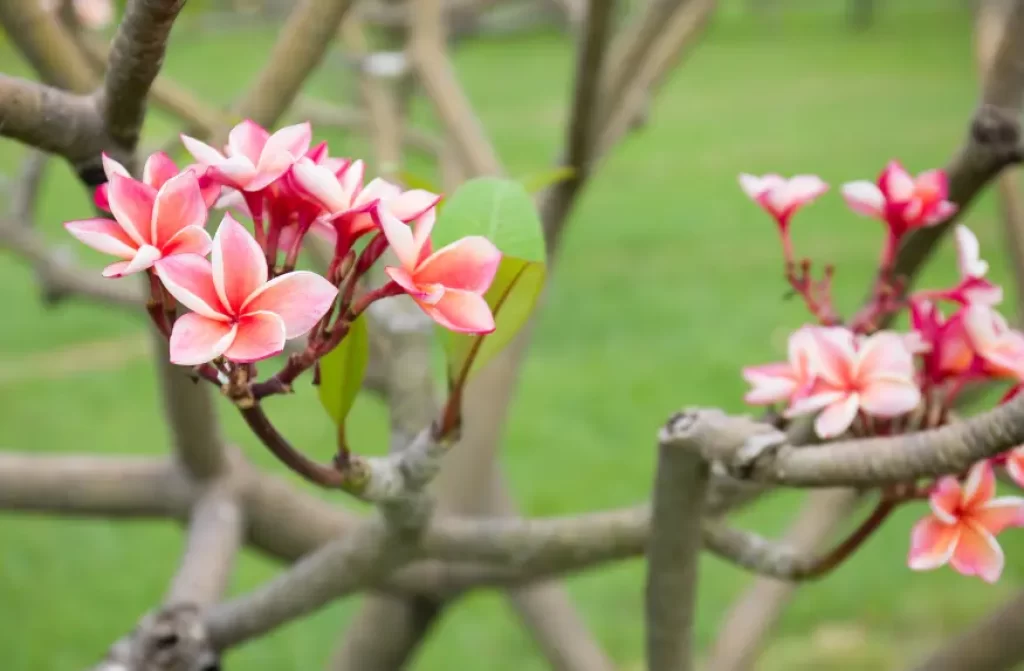
Frangipani is a popular plant that can be grown in containers. It is an ideal choice for those who love to have a beautiful and fragrant garden but have limited space. However, growing frangipani in pots requires proper care, especially. In this article, we will discuss some tips for fertilizing frangipani in containers.
Use a balanced fertilizer with equal parts nitrogen, phosphorus, and potassium.
it’s essential to use the right type of fertilizer. A balanced fertilizer with equal parts nitrogen, phosphorus, and potassium (NPK) is ideal for frangipani plants. Nitrogen helps the plant grow leaves and stems; phosphorus promotes root development and flower production while potassium strengthens the plant’s immune system.
Apply fertilizer every two weeks during the growing season.
Frangipani plants require regular fertilization during their growing season. The best time to apply fertilizer is from spring until late summer or early fall. During this period, you should apply fertilizer every two weeks to promote healthy growth and blooming.
Reduce fertilizer application during the winter months.
During the winter months, Frangipani plants become dormant and stop growing actively. Therefore, you should reduce the frequency of your fertilizer application during this period. You can apply fertilizer once a month or even less frequently if necessary.
Avoid over-fertilizing as it can lead to burnt leaves and stunted growth.
Over-fertilizing your frangipani plants can cause more harm than good. It can lead to burnt leaves due to salt buildup or even stunt growth by causing excessive foliage at the expense of flowers. To avoid over-fertilization, always follow the manufacturer’s instructions on how much fertilizer you should use per pot size or consult with a gardening expert.
Consider using organic fertilizers such as compost or worm castings.
Organic fertilizers are an excellent choice for frangipani plants grown in containers. They provide a slow-release of nutrients that the plant can absorb gradually, reducing the risk of over-fertilization. Compost and worm castings are two popular organic fertilizers that you can use to feed your frangipani plants. They not only provide essential nutrients but also improve soil structure and water retention.
proper fertilization is crucial for healthy growth and blooming. By following these tips, you can ensure your frangipani plants thrive in their container environment.
How to get white frangipani to bloom?
To get white frangipani to bloom, you need to make sure the plant receives enough sunlight, water, and fertilizer. White frangipanis require at least six hours of direct sunlight per day; otherwise, they may not bloom correctly. Make sure the potting soil is well-draining and moist but not waterlogged. Finally, follow the above tips on fertilizing your plant with a balanced fertilizer every two weeks during the growing season.
Why won’t my Frangipani bloom?
Several factors can prevent your Frangipani from blooming. One common reason is insufficient sunlight or too much shade. Another reason could be over-fertilization or under-fertilization leading to nutrient deficiency or salt build-up in the soil. Finally, pests or diseases such as spider mites or root rot could also affect blooming. To determine why your Frangipani isn’t blooming correctly, check for any signs of damage or pest infestation and adjust its care accordingly by following our tips above on proper watering and fertilizing techniques.
Pruning Frangipani trees: How to pick and care for your plant
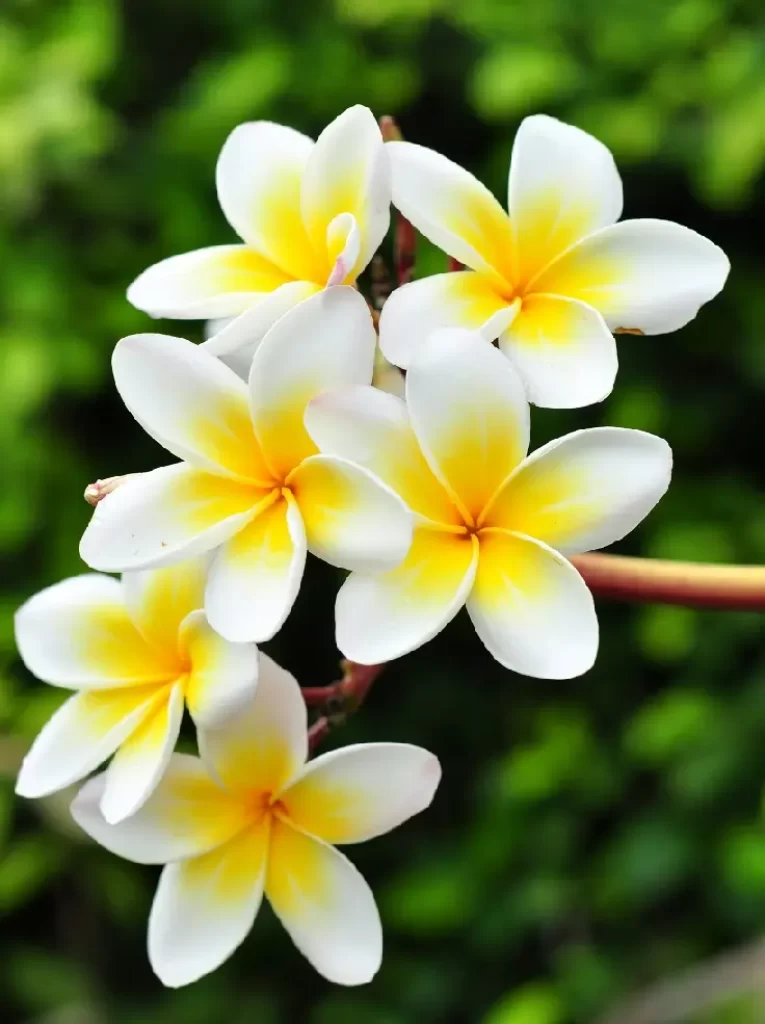
Frangipani trees are known for their beautiful, fragrant flowers and tropical appearance. If you have a frangipani tree in a pot, it’s important to know how to properly prune it to keep it healthy and looking its best. Here’s what you need to know:
When to prune frangipani trees
The best time to prune frangipani trees is during the winter when they’re dormant. This is because pruning during this time won’t interfere with the tree’s growth or flowering. Pruning during the winter allows the tree to heal before new growth begins in the spring.
How to prune frangipani trees
When pruning your frangipani tree, make sure you use sharp, clean tools so that you don’t damage the tree or introduce disease. Cut branches at a 45-degree angle to prevent water from settling on the cut and potentially causing rot.
It’s also important to remove any leaves or branches that are diseased or damaged as soon as possible. Doing so will help prevent further spread of disease and keep your tree healthy.
Picking a frangipani tree
If you’re looking to add a frangipani tree to your collection, there are a few things you should consider before making your purchase. First, make sure you choose a healthy-looking plant with no signs of damage or disease.
You’ll also want to consider the size of the pot that your frangipani will be living in. Make sure it’s large enough for the roots of the plant and has good drainage.
Finally, choose a variety of frangipani that appeals to you visually. There are many different colors and patterns available, so take some time to find one that fits your personal taste.
What does a frangipani tree look like?
Frangipani trees are known for their large, fragrant flowers that come in a variety of colors including white, pink, yellow, and red. The leaves of the frangipani tree are long and narrow with a glossy appearance.
When grown in a pot, frangipani trees can reach heights of up to six feet tall. They prefer full sun and well-draining soil.
Common diseases that infect Frangipani in pots: Identifying and treating problems with your plant
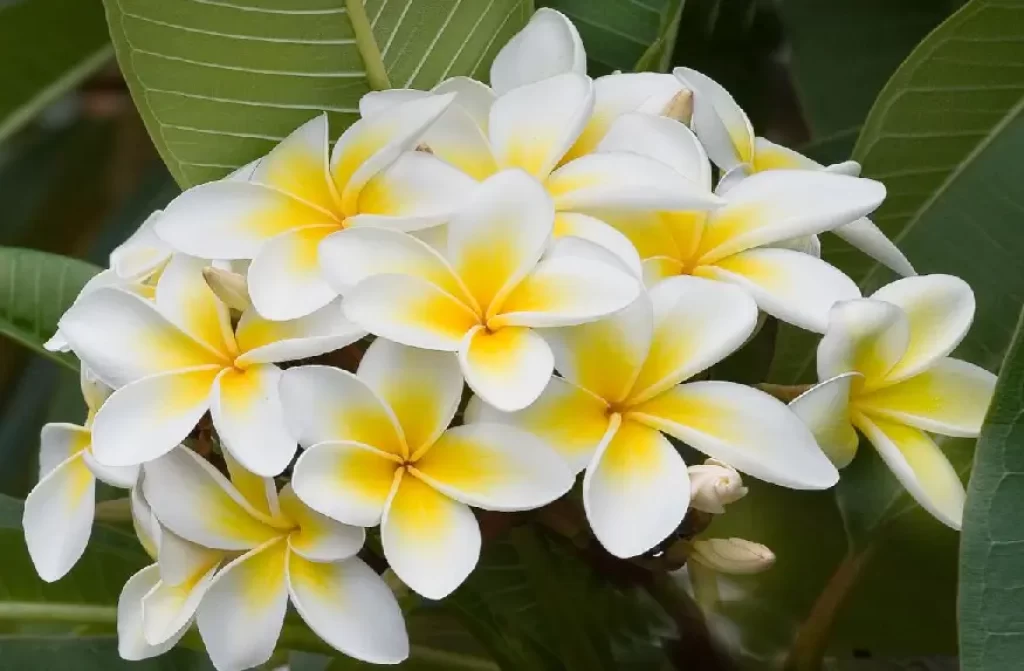
Frangipani in pots can bring a touch of the tropics to any garden or balcony. However, these plants are susceptible to a range of diseases that can affect their growth and overall health. One of the most common diseases that infect frangipani in pots is frangipani rust. In this article, we will discuss how to identify and treat this disease, as well as provide tips on preventing it from infecting your plant.
Identifying Frangipani Rust
Frangipani rust is caused by a fungus called Coleosporium plumeriae. This fungus thrives in warm, humid conditions and can quickly spread throughout your plant if left untreated. The first sign of frangipani rust is yellow spots on the leaves. These spots will eventually turn brown and become raised pustules filled with spores.
If you notice yellow spots on your frangipani’s leaves, it is important to act quickly to prevent the disease from spreading. The longer you wait, the harder it will be to control the infection.
Treating Frangipani Rust
The first step in treating frangipani rust is to remove all infected leaves from your plant. Be sure to dispose of these leaves carefully, as they may contain spores that could reinfect your plant or other nearby plants.
Once you have removed all infected leaves, you should apply a fungicide to your plant according to the manufacturer’s instructions. There are many different types of fungicides available on the market, so be sure to choose one that is specifically designed for use on frangipanis.
It is also important to ensure that your plant has proper drainage and air circulation. Frangipanis thrive in well-draining soil and require plenty of sunlight and fresh air. If your plant is growing in a pot, be sure to choose a pot with drainage holes and avoid overwatering.
Preventing Frangipani Rust
The best way to prevent frangipani rust from infecting your plant is to take preventative measures. One of the most important things you can do is to ensure that your plant is getting the proper nutrients it needs to thrive. Frangipanis require a balanced fertilizer that contains equal amounts of nitrogen, phosphorus, and potassium.
You should also avoid overcrowding your plants. Frangipanis need plenty of space to grow and thrive, so be sure to give them enough room in their pots or planting beds.
Finally, it is important to monitor your plants regularly for signs of disease or pest infestation. Early detection is key.
Tips for successful care and maintenance of Frangipani plants grown in containers
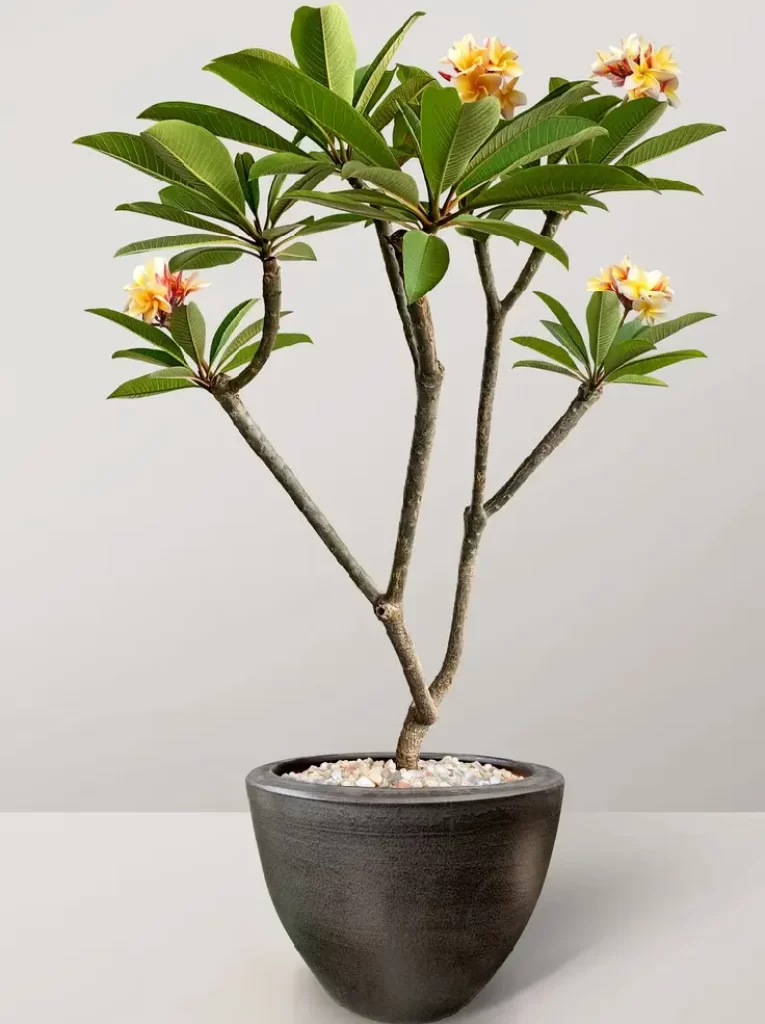
Growing Frangipani in pots can be a challenging task, but with the right care and maintenance, you can have a beautiful and healthy plant. Here are some tips to help you achieve success:
1. Choosing the right pot size for your Frangipani
The pot size is crucial when growing Frangipani in containers. It should be large enough to accommodate the roots without being too big that it holds excess water. A good rule of thumb is to choose a pot that is at least two inches wider than the root ball.
2. Well-drained soil: The best soil for Frangipani in pots
Frangipani thrives in well-drained soil that has good aeration. Use a mix of sand, perlite, and peat moss to create an ideal growing medium for your plant.
3. Proper watering methods for Frangipani trees in pots
Overwatering or underwatering can both harm your Frangipani plant. Water your plant deeply once or twice a week, depending on the humidity level and temperature of your environment.
4. Tips for fertilizing Frangipani in containers
Fertilize your Frangipani once every three months during its active growth period (spring and summer). Use a balanced fertilizer with equal amounts of nitrogen, phosphorus, and potassium.
5. Pruning Frangipani trees: How to pick and care for your plant
Prune your Frangipani tree regularly to remove dead branches or damaged parts. Do not prune during winter as it may cause stress on the plant.
6. Common diseases that infect Frangipani in pots: Identifying and treating problems with your plant
Frangipanis are prone to fungal infections such as black tip fungus or rust. Inspect your plant regularly for any signs of disease and treat it immediately with a fungicide.
By following these tips, you can ensure that your Frangipani plant grows healthy and blooms beautifully. Remember to provide adequate sunlight, maintain proper temperature, and protect it from pests.
Now that you know how to care for your Frangipani in pots, go ahead and give it a try! Your patience and efforts will be rewarded with a stunning plant that will brighten up any space.
Frequently Asked Questions
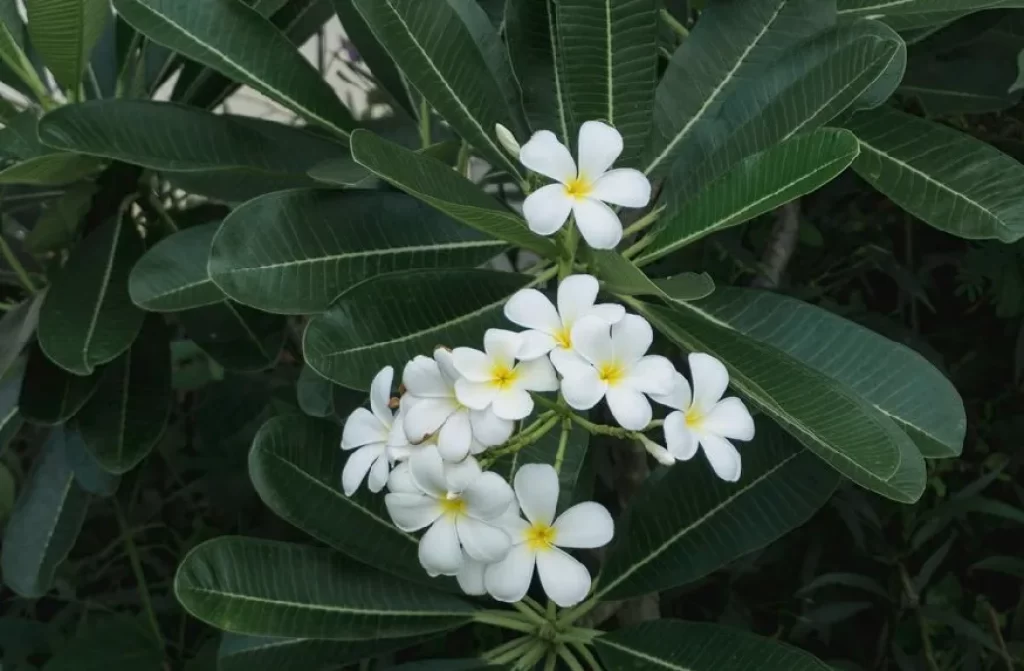
How to Care for Frangipani in Pots?
In addition to proper watering, caring for frangipani trees in pots involves providing them with adequate sunlight, fertilizing regularly, and pruning when necessary. It’s also important to protect them from cold temperatures and frost during the winter months.
How Often Do You Water Frangipani in Pots?
The frequency of watering your frangipani tree in a pot will depend on various factors such as the size of the pot, humidity levels, and temperature. As a general rule of thumb, you should water when the soil is dry up to your second knuckle.
How Often To Water Frangipani in a Pot?
Frangipani trees require infrequent but deep watering. Depending on the climate conditions you live in, you can water your frangipani tree once or twice per week during hot weather. During cooler weather or winter months, reduce watering frequency.
How to Care for Plumeria in Pots?
To care for plumeria (frangipani) trees in pots, provide them with adequate sunlight (at least six hours per day), well-draining soil mix that contains perlite or sand, and regular fertilizer applications throughout their growing season.
How Do I Get My Potted Plumeria to Bloom?
To encourage blooming of your potted plumeria tree (frangipani), ensure it receives enough direct sunlight exposure and avoid overwatering it. Use a high-phosphorus fertilizer during its active growth phase (spring-summer) which helps promote flower production.
How big of a pot does a plumeria need?
A plumeria needs a minimum of a 12-inch depth and 14-inch width container to accommodate its root system and provide stability for the plant.
How big do plumerias get in pots?
While plumerias can reach heights of up to 20 feet when grown in the ground, in pots they typically grow to a height of 6-8 feet. The restricted root space of a pot can limit the overall size of the plant.
What kind of pot is best for plumeria?
The best pots for plumerias are typically made from durable materials such as terracotta or ceramic. These materials offer good drainage, which is crucial for preventing waterlogged soil. They also have the advantage of withstanding high temperatures and direct sunlight without cracking or fading.
Where can I buy plumeria pots?
You can find plumeria pots for sale online on websites like Amazon and Etsy, where you can choose from a variety of sizes, styles, and materials. Additionally, local nurseries and garden centers often carry a selection of pots suitable for plumerias, allowing you to inspect them in person before making a purchase.
You might also like
- All About Common Sunflowers
- Cultivating Paphiopedilum Venus Slipper Orchids
- Growing Japanese Maple: Care Tips & Cultivars






